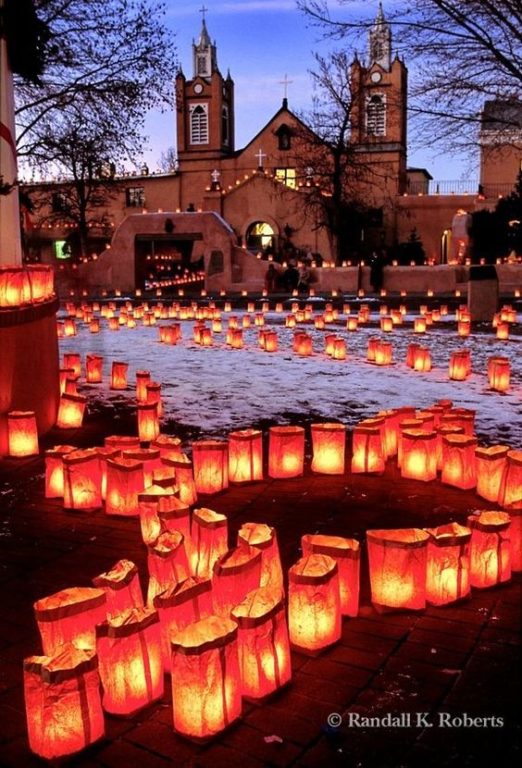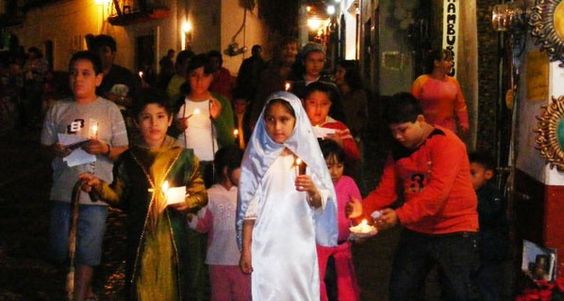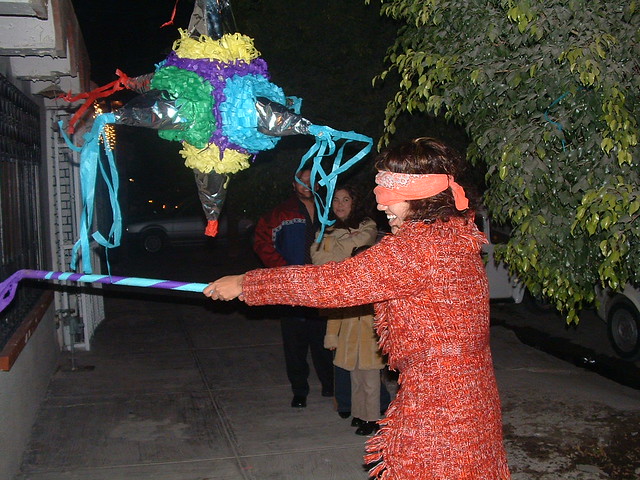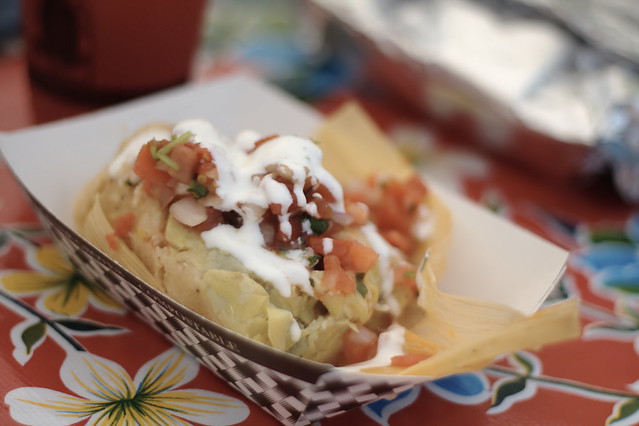Christmas brings to mind the image of a dry, cold, snow-clad landscape, however, this is not the case in Mexico. If you visit the country in the month of December, you’ll be greeted by the warm air. As Christmas arrives, families are out shopping for presents, ornaments and delicious food or
puestos available in the local marketplace. Traditionally, Mexican families prefer to decorate their homes with an abundance of lilies and evergreens. Children and Adults alike indulge in crafts, particularly the activity of making lanterns or farolitos. These are made out of brown paper bags
into which intricate designs are cut. Candles are then placed inside and the farolitos are set alongside windowsills, rooftops, building exteriors, and pavements. This is a way in which the community is illuminated with the spirit of Christmas.

Las Posads Celebrations
Christmas is known as Las Posadas in Mexico and is celebrated on the 16th of December. The 9th evening of Las Posadas is recognised as Buena Noche or Christmas Eve. Dates between the 16th to 24th December features processions or posada of children — this custom is complete
with candles and singing. Posada is the Spanish term for Inn or Lodging. Typically, there are nine Posadas that reflect Joseph and Mary’s search for shelter. The children call at the houses of their neighbors and friends, asking them for protection — they sing a song at each house. As custom
dictates, the children are told that there is no space in the house and they must look elsewhere. After the first two rejections, they are taken in my by the third house, who welcomes them in and hosts a party. This is usually followed by prayers of thanks, a delicious spread, games, and fireworks.
Each Posada party is hosted by different families. At the final Posada on Buena Noche or Christmas Eve, figures of shepherds, The Three Kings and animals are displayed on the board. On arrival, children place a statue of baby Jesus on the nativity or nacimiento. These decorative
figures are usually made of clay and are passed down through generations. They can be found out at the local market if you wish to pick one up for yourself. This custom is followed by midnight mass which most families partake in. Lastly, church bells are rung and fireworks are burst to club rate the start of Christmas.

Popular Party Games
A popular Christmas game that is often played at Posada parties includes the Piñata. Traditionally, a Piñata is a figure or animal modeled out of paper mache and clay. On Christmas however, the piñata takes a different shape — it is crafted in the shape of a ball with seven
peaks. The spikes or peaked usually depict the ‘seven deadly sins’. The outside is decorated with strings of confetti or streamers while the inside is just as colorful and holds sweet treats for children to rip open. These are times to either a tree branch or hang from the ceiling and are hit
open with a stick. Children are blindfolded and take turns hitting the piñata until it splits and candy comes pouring out. The objective is to collect as many treats as possible!

The Main Feast
Like in all parts of the world, Christmas Eve in Mexico is spent with family. The main Christmas meal is shared between family members and consists of a scrumptious spread. Some Christmas meals include pozole ( thick soup cooked with hominy, chicken, or pork, topped with leafy greens
and chillies, roast turkey, roast pork, tamales ( steamed corn husks or plantain leaves filled with meats, cheese or vegetables, especially chillies), bacalaoa (salt cod), romeritos (green vegetables cooked in mole sauce with shrimp and potatoes). Additionally, salads such as
Ensalada Nochebuena (Christmas Eve Salad) are traditionally served as side dishes. No feast is complete without dessert! Bunuelos are high in demand are popularly made as part of the meal. They are a type of fried pastry, sprinkled with sugar, cinnamon or a sweet syrup. They can be
made in two different types of shapes — flat or round. If you’re in need of a drink to wash down your meal with, the Mexicans have got that covered. Two kinds of drinks are served — Ponche ( a warm Christmas punch made with fruit) or Rompope ( an equivalent of eggnog with rum added to it).

The Closing Ceremonies
Mexicans also celebrate ‘los santos inocentes’ or ‘Day of the Innocent Saints’ on the 28th of December. This day is devoted to the remembrance of babies that were murdered on the orders of King Herod when he attempted to kill baby Jesus. You could say that it is the English
equivalent of April Fool’s Day and draw a parallel between the two. It is said that you are not required to return anything back to its original owner if they lend you something on this day.
In some parts of Mexico, children await the arrival of Santa Clause on the 24th of December. Furthermore, they expect presents and gifts to be given on the 6th of January at Epiphany or ‘el Dia de los Reyes’. The presents are usually left by the Three Kings (or Magi). Gifts are often
accompanied by candy and other sweet treats. Apart from the above, it is also traditional to eat a special cake known as ‘Rosca de Reyes’ or the Three Kings Cake. This custom contains a fun twist — a small figure of baby Jesus is hidden inside the cake and the lucky individual who find
this in their piece is declared as the ‘Godparent’ of Jesus for the year.
Finally, Christmas celebrations are brought to an end with La Candelaria or ‘The Candles’. Alternatively, it is also known as Virgen de la Candelaria ‘Virgin of Lights or Candles’ (this is regret to as Candlemas across the world). This is celebrated on the 2nd of February and features
a religious service, followed by a Candelaria party. A Mexican Christmas typically stretches from the 3rd of December to the 2nd of February. Indeed it is a rather long holiday but the Mexicans sure know to spice to things up!
